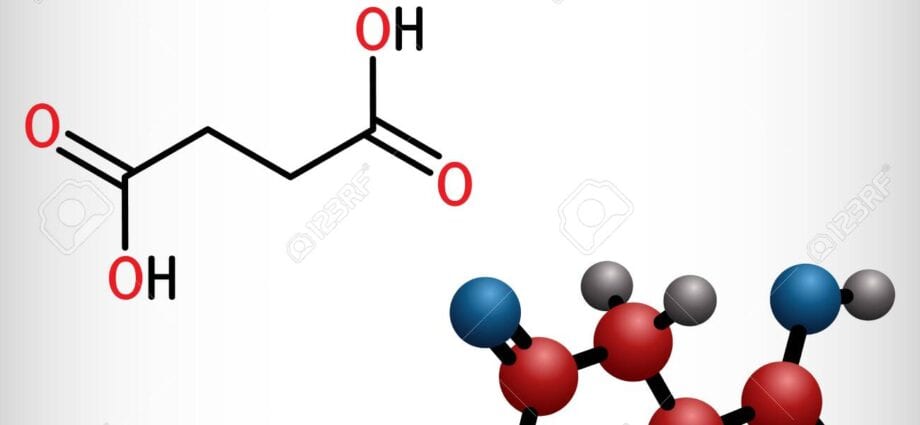Contents
Succinic acid (Succinic acid, butanedioic acid, E363)
Succinic acid is called dibasic carboxylic acid, which has both natural and chemical origin. Succinic acid is included in the group of food additives-antioxidants( antioxidants), in the international classification of the substance assigned the index E363.
General Characteristics of Succinic Acid
Succinic acid is an almost transparent colorless crystalline substance, odorless, with a slightly bitter salty taste (calorizator). It is highly soluble in water, has a melting point of 185 °C, chemical formula C4H6O4. It was obtained in the middle of the XVII century during the distillation of amber, currently the extraction method is hydrogenation of maleic anhydride. Succinic acid is contained in almost all plants and animal organisms, for example, the cells of the human body “drive” through themselves up to 1 kilogram of succinic acid per day.
Benefits and harms of Succinic acid
Succinic acid is necessary for the human body, as it takes part in cellular respiration, neutralizes free radicals and is a reducing agent of energy reserves. Athletes use Succinic acid in conjunction with glucose before important competitions to maintain tone. Initially, Succinic acid was used only as a drug that strengthens the immune system and improves the activity of the cardiovascular system, brain and liver. In addition to neutralizing many poisons that enter the body, Succinic acid has anti-radiation properties and is a protection against the occurrence of neoplasms. The daily intake of E363 is set at no more than 0.3 g, although the food supplement is considered harmless and it is allowed to give it to children.
Like any acid, the E363 supplement can significantly damage the mucous membranes in case of an overdose, so you need to carefully read the product labels and avoid getting Succinic acid in the form of tablets into the hands of children.
Application of E363
E363 is used in the food industry as an acidity regulator, acidifier. Most often, E363 can be found in alcoholic beverages – vodka, beer and wine, as well as dry beverage concentrates, soups and broths. In addition to the food industry, Succinic acid is used for the production of resins and plastics, and many medicines.
Use of E363
On the territory of our country, the use of E363 Succinic acid as a food additive-antioxidant is allowed, provided that the daily consumption norms are observed.










